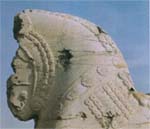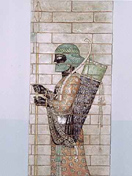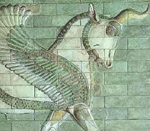

Journey Into The Ancient World Of ShushBy: Satgin Seraj  Shush (Susa) is an ancient city, filled with amazing beauty, mystery and history. This ancient city dates back to approximately 4000 B.C., is located in the Province of Khuzestan, and has been under the reign of Babylonian, Persian and Greek Empires. It is widely believed that the first distinct people to emerge on the Iranian Plateau were the Elamites, who established a city at Shush. Shush, the ancient capital of Elam and the Administrative capital of the Achaemenid King Darius and his successors (521-331 B.C.), was a royal residence and the eastern terminus of the Persian Royal Road that ran westward approximately 1,600 miles. This ancient city was an important trade center and the source of legal development in the region. One example is the time frame in which Shush was under the reign of the Greek Empire. During this period, Shush became a colonial city-state and was named Seleucia on the Euleaus. After the Greek Empire was pushed out of Shush, the city continued to be an important city and trade center.  As mentioned earlier, Shush has also played a role in the development of laws in the region. A key player in legal development in the region was the Ammorite King Hammurabi (1780 B.C.) During his reign he established an extensive system of laws regarding social, moral, religious, commercial and civil laws. Tablets containing these laws were erected throughout the kingdom in order to establish a solid understanding of these laws by the general public. The tablets containing the aforementioned laws have been discovered in archeological sites, along with other significant objects of interest.  The principal objects of interest include four mounds representing the citadel, the Palace of Darius (521-486 B.C.) and two sections of the city, within which remains seventy-two columns and bull heads, similar to those in Persepolis. Significant archeological discoveries have also included pottery, arms, seals, ornamental objects, metalwork, bronze articles, proto-Elamite writing, tablets containing pictographic writing, an extensive Parthian cemetery, the Victory Stele of Naram-Sin and the Law Code of Hammurabi (1780 B.C.). Despite the significance of these artifacts most of them are not currently located in Shush. They are located in museums throughout the world.  Front Page Front Page |